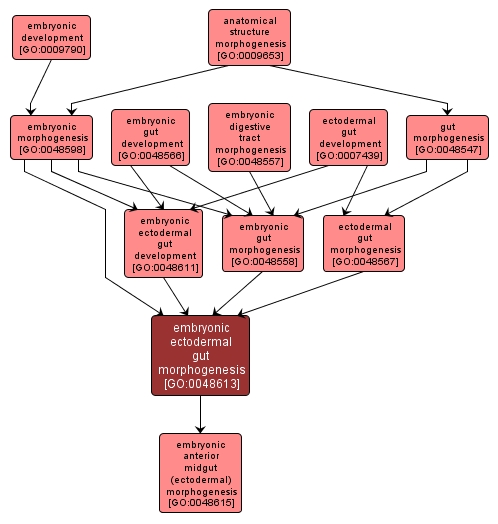GO TERM SUMMARY
|
| Name: |
embryonic ectodermal gut morphogenesis |
| Acc: |
GO:0048613 |
| Aspect: |
Biological Process |
| Desc: |
The process, occurring during the embryonic phase, by which the anatomical structures of the ectodermal gut are generated and organized. Morphogenesis pertains to the creation of form. |
|

|
INTERACTIVE GO GRAPH
|














